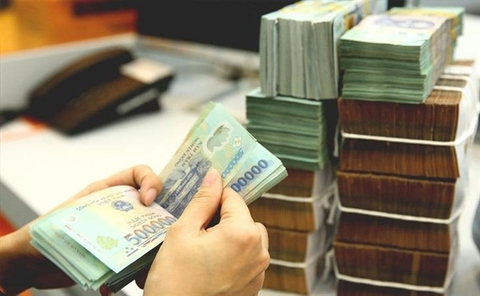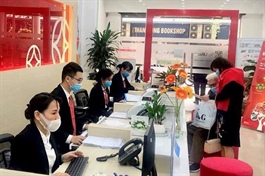Banks plan to increase charter capital to US$2.8 billion in 2022
Banks plan to increase charter capital to US$2.8 billion in 2022
The capitalisation of Viet Nam’s banking sector is expected to increase by nearly US$2.8 billion this year.

During the season of bank annual general meetings (AGM) this year, along with ambitious business plans set for 2022, 17 out of 27 listed banks have approved plans to increase capital in the year, totalling nearly $2.8 billion.
The capital increase will mainly come from issuing shares to pay dividends, offering private placement or issuing shares to foreign strategic investors.
If the approved capital increase plans succeed, the order of capital size of banks in the market will be changed, with private bank Vietnam Prosperity Joint Stock Commercial Bank (VPBank) surpassing State-owned banks to top the list.
At the recent AGM, VPBank was given the go-ahead by its shareholders to issue its shares to staff under the employee stock ownership plan (ESOP) scheme and, at the same time carry out the plan to further strengthen its capital via the share issuance from equity and the private placement with a strategic investor to eventually bolster the bank's charter capital to VND79.33 trillion.
Before the expected capital rise, Fitch Ratings said the average capital adequacy ratios (CARs) of Basel II compliant State-owned and private sector banks in Viet Nam stood at 9.2 per cent and 11.4 per cent, respectively.
According to Fitch, low capitalisation levels are likely to remain a credit weakness for rated Vietnamese banks as rapid loan growth will make it challenging to raise capital adequacy ratios (CARs) in the next two to three years.
The rating agency said the capitalisation of Viet Nam’s banking sector had improved gradually in recent years amid rising profitability and banks’ capital raising efforts.
Fitch estimates that the banks that are still to become Basel II compliant need only about US$0.6 billion of new capital to meet the local Basel II minimum CAR requirement of 8 per cent before the implementation deadline in January 2023.
“However, we calculate that the banking system's additional capital needs would rise to as much as $10.7 billion (2.9 per cent of GDP) if banks raised their loan-loss reserves to cover potential losses from all problem loans while simultaneously maintaining average CARs at 10 per cent. State banks drive much of the shortfall due to their lower capital positions,” it said.
Fitch forecasts Viet Nam’s capitalisation levels will remain thin, partly reflecting rapid credit growth. Given their heightened risk appetites, the rating agency expected most Vietnamese banks to pursue in the medium term. Sustained high loan growth could eventually exacerbate asset-quality problems, especially in a severe economic downturn.
According to Fitch, the capital accumulation has been low, despite the strong profitability many domestic banks have reported in recent years. This is because most of the rise in retained earnings was consumed by rapid loan growth.




















